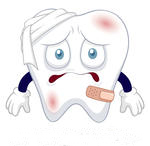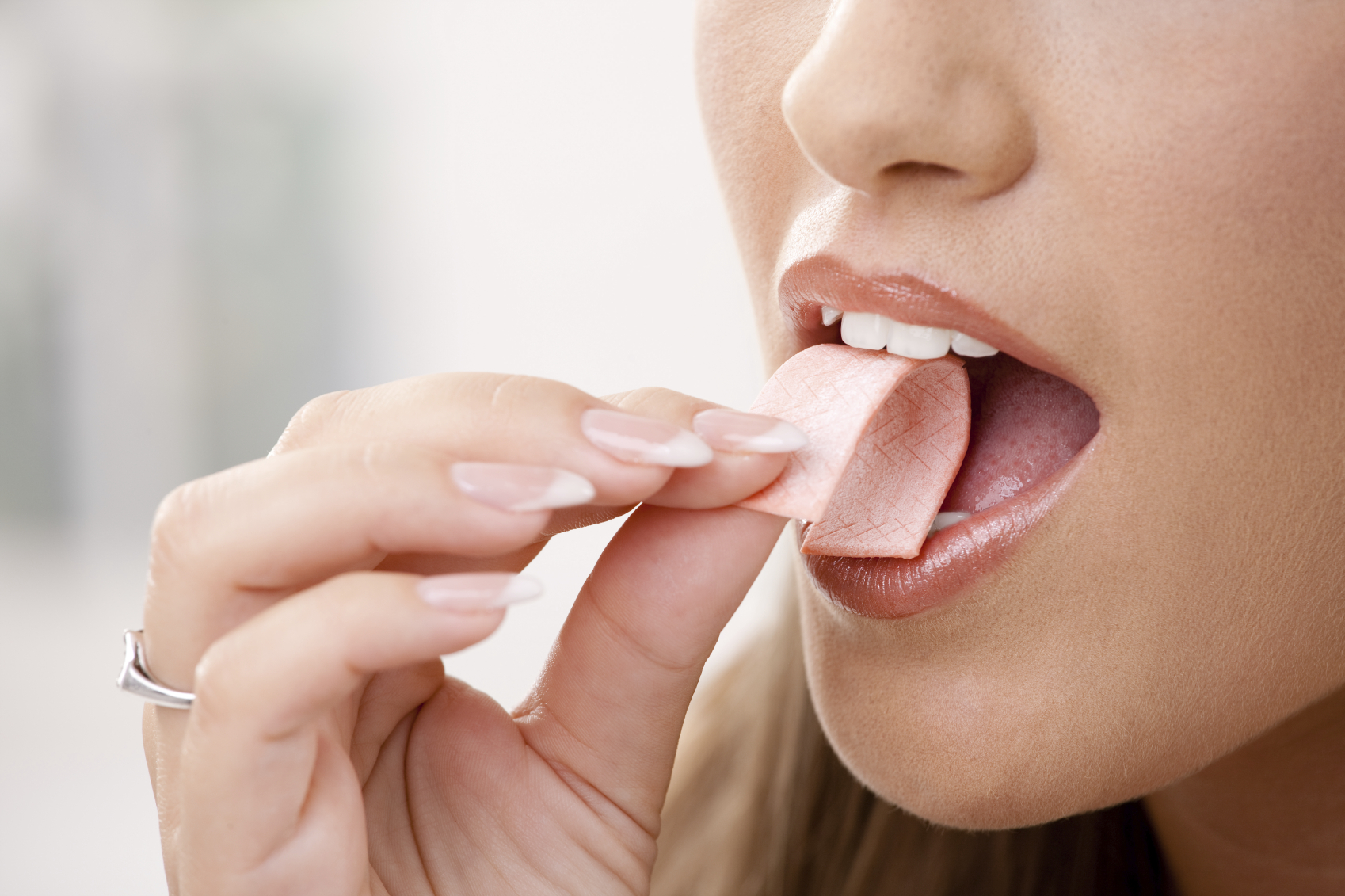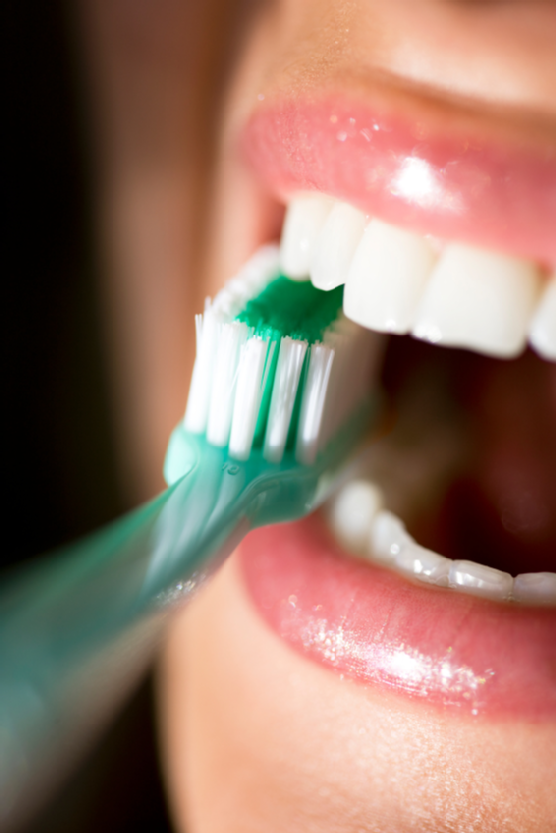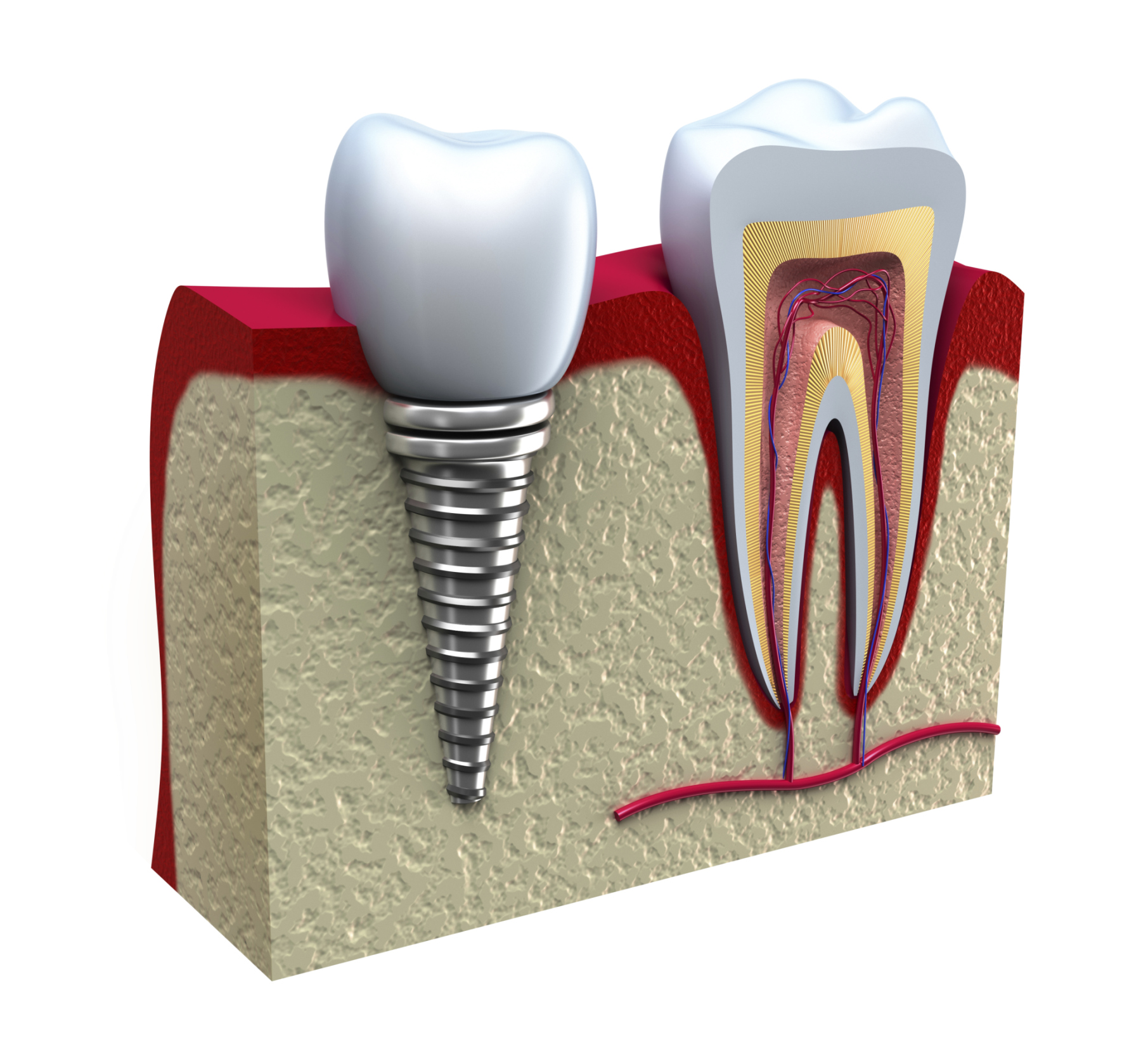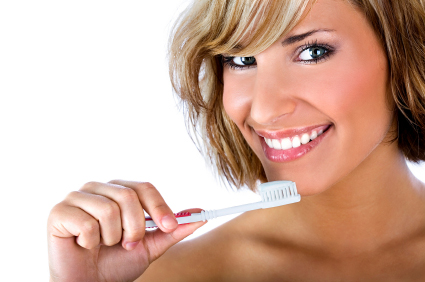Tooth sensitivity is a common dental concern that affects millions of people worldwide. Whether it’s a sudden jolt of pain while enjoying an ice cream cone or a twinge when sipping hot coffee, sensitive teeth can be a real discomfort. In this blog post, we’ll delve into the causes of tooth sensitivity and explore effective strategies for managing and preventing this common dental issue.
Continue reading “Understanding and Managing Tooth Sensitivity | Henderson Dentist”What To Know About Dental Emergencies | Henderson Dentist
Dental emergencies can strike at any time, causing pain and anxiety. In this guide, we’ll explore common dental emergencies, their causes, and practical steps for immediate relief. Whether it’s a sudden toothache or a knocked-out tooth, being prepared and informed can make all the difference in managing these situations effectively.
Understanding Dental Emergencies:
Dental emergencies encompass a range of urgent situations, from severe toothaches and broken teeth to injuries affecting the mouth and jaw. Recognizing the signs of a dental emergency is crucial for prompt action. Common issues include intense pain, swelling, bleeding, and damage to teeth or surrounding tissues.
Common Dental Emergencies:
- Toothaches: Causes, symptoms, and initial at-home remedies.
- Broken or Chipped Teeth: Immediate steps to take and the importance of saving any broken fragments.
- Knocked-Out Tooth: Quick response tips for the best chance of saving a dislodged tooth.
- Lost Fillings or Crowns: Temporary solutions until professional help is available.
First Aid for Dental Emergencies:
Effective first aid can alleviate pain and prevent further damage before reaching the dentist. Some families are prepared with an emergency first-aid kit which may include over-the-counter pain relievers, sterile gauze, a small container for a knocked-out tooth, and dental cement for temporary repairs.
Seeking Professional Help:
While temporary measures can provide immediate relief, consulting a dentist is crucial. The guide will outline the importance of contacting a dental professional promptly, even if the pain subsides, to address underlying issues and prevent potential complications.
In times of dental emergencies, knowledge and preparedness are key. By familiarizing yourself with common issues, knowing how to administer effective first aid, and seeking timely professional help, you can navigate dental emergencies with confidence, minimizing pain and ensuring the best possible outcomes for your oral health.
Interested in learning more? Call to schedule an appointment today at 702-735-2755 or visit us online at www.patricksimonedds.com today.
Dr. Patrick Simone proudly serves patients from Henderson and all surrounding areas.
The Battle Against Bad Breath | Henderson Dentist
Bad breath, also known as halitosis, is a common and often embarrassing condition that can affect anyone at any age. While it’s a prevalent issue, its impact on social interactions and self-esteem cannot be overstated. In this blog post, we will delve into the causes of bad breath, effective prevention strategies, and lifestyle changes to keep your breath fresh and your confidence soaring.
Understanding the Causes:
- Poor Oral Hygiene: the most common cause of bad breath is inadequate oral hygiene. Bacteria thrive in the mouth, feeding on food particles left behind after meals. Regular brushing, flossing, and tongue cleaning can significantly reduce the bacterial load, preventing bad breath.
- Dry Mouth: saliva plays a crucial role in maintaining oral health by neutralizing acids and washing away debris. Dry mouth, often caused by certain medications or dehydration, reduces saliva production, creating an environment where bacteria flourish and contribute to bad breath.
- Diet: the foods we consume can directly impact our breath. Strong-smelling foods like garlic, onions, and certain spices can leave a lingering odor. Additionally, crash diets or low-carbohydrate diets can lead to the production of ketones, resulting in an unpleasant breath.
- Tobacco Use: smoking and using tobacco products not only stains teeth but also contributes to bad breath. These habits can irritate the gums, leading to gum disease, another major factor in halitosis.
- Medical Conditions: underlying medical conditions such as respiratory infections, diabetes, and gastrointestinal issues can manifest as bad breath. Addressing these health concerns can often alleviate the associated oral odor.
Prevention Strategies:
- Maintain Excellent Oral Hygiene: brush your teeth at least twice a day, floss daily, and use an antimicrobial mouthwash to eliminate bacteria and plaque buildup.
- Stay Hydrated: drinking an adequate amount of water helps maintain saliva production, preventing dry mouth and reducing the risk of bad breath.
- Watch Your Diet: limit the consumption of strong-smelling foods and beverages. Opt for a balanced diet rich in fruits and vegetables to promote oral health.
- Quit Smoking: if you smoke or use tobacco products, quitting can improve not only your breath but also your overall health.
- Regular Dental Checkups: scheduling regular dental appointments allows your dentist to detect and address oral health issues before they contribute to bad breath.
Lifestyle Changes:
- Go Sugar-Free: chewing sugar-free gum or sucking on sugar-free mints can stimulate saliva flow, helping to keep your mouth moist and fresh.
- Maintain a Healthy Lifestyle: exercise regularly, eat a balanced diet, and manage stress to promote overall well-being, which can indirectly contribute to better oral health
Banishing bad breath requires a multi-faceted approach involving good oral hygiene, healthy lifestyle choices, and addressing underlying health issues. By incorporating these strategies into your daily routine, you can confidently embrace a fresher breath and a more positive social experience. Remember, a little effort goes a long way in the fight against bad breath!
Interested in learning more? Call to schedule an appointment today at 702-735-2755 or visit us online at www.patricksimonedds.com today.
Dr. Patrick Simone proudly serves patients from Henderson and all surrounding areas.
Five Myths and Misconceptions of Oral Care | Henderson Dentist
Oral care and hygiene are paramount to our ability to maintain and retain our teeth as we age. With so much information about oral care practices online, we felt it was important to demystify some of the most common dental myths and misconceptions we hear and offer advice on how to move forward.
Myth 1. Baby Teeth Don’t Need Brushing.
Good oral care practices begin when we are young and proper oral care for a child’s first set of teeth matters. Tooth decay in a baby tooth can lead to complications as an adult, so we recommend a twice-daily brushing routine as soon as the child has teeth.
Myth 2. Sugar Causes Cavities.
Sugar itself is not the cause of cavities, though the bacteria that eat the sugar can be. The starches and sugar themselves attract bacteria that thrive on the surface of your teeth and release an acidic compound that promotes tooth decay. Regular brushing and rinsing after eating particular sugary foods will go a long way toward preventing decay.
Myth 3. Hard Brushing Cleans Better.
This action is counter-productive, as excess pressure on your teeth can work to damage enamel rather than support it. Hard brushing also hurts our gums and can lead to a recessed gum lining over time. We recommend taking care to brush gently with a soft-bristle brush.
Myth 4. Chewing Gum Helps Clean Teeth.
Chewing gum is certainly not a replacement for brushing. Chewing gum can be a great way to combat sugar cravings or a candy habit, but while it makes your breath smell better, it cannot replace the benefits of brushing.
Myth 5. Enamel Loss Causes Sensitivity.
We may experience sensitivity for many reasons, and enamel loss doesn’t happen overnight. Tooth grinding, abrasive toothpaste, aggressive brushing and lack of regular proper oral hygiene all contribute to both sensitivity and a loss of enamel. Should you lose your enamel, however, you will likely experience tooth sensitivity as well.
Interested in learning more? Call to schedule an appointment today at 702-735-2755 or visit us online at www.patricksimonedds.com today.
Dr. Patrick Simone proudly serves patients from Henderson and all surrounding areas.
Understanding Oral Bacteria | Henderson Dentist
We all know that oral bacteria can contribute or be detrimental to our overall oral hygiene. Good bacteria and harmful bacteria coexist, and certain behaviors can advance one or the other. In general, a good oral care routine and healthy eating will keep the harmful bacteria at bay without any serious issues. Here are some things you should know about the bacteria that exists within your mouth.
Helpful Bacteria
lactobacilli bacteria can fight several kinds of harmful bacteria and may help restore a healthy balance in your mouth. This bacteria can be found in some types of chewing gum and people with gingivitis may be asked to use it every day by their dentist.
Streptococcus Salivarius helps suppress oral pathogens like Streptococcus Pyogenes and Streptococcus Pneumonia that cause infections and autoimmune disorders. It also provides immune support to help reduce symptoms of oral and respiratory viral infections while crowding out other potentially harmful oral pathogens.
Harmful Bacteria
Streptococcus mutans is specifically found on tooth surfaces and difficult-to-clean areas like pits and fissures on the teeth. It feeds on the sugars and starches you eat, leading to the formation of cavities. This bacteria is the main cause of tooth decay in humans because it produces enamel-eroding acids and thrives in a low pH.
Periodontitis is a serious inflammatory disease that affects the tissues and the alveolar bone that support the teeth. While this disease is caused by several types of bacteria, Porphyromonas gingivalis is strongly linked to it.
Interested in learning more? Call to schedule an appointment today at 702-735-2755 or visit us online at www.patricksimonedds.com today.
Dr. Patrick Simone proudly serves patients from Henderson and all surrounding areas.
Enhance Your Smile With These Care Accessories | Henderson Dentist
There are a number of gadgets on the market specifically designed to fill whatever gaps you feel are present as you strive to enhance your smile. At times, it can feel intimidating, or cause choice anxiety as we try to understand what may work best for our care routine and needs.
Oral care accessories essentially fall into two categories; hygienic and aesthetic. Of course, a well-rounded oral care routine is the first step towards attaining the smile you want, but if your hygiene is quite good, and you still aren’t seeing the results you want, aesthetic additions may be do the trick.
Here are a few of the different hygienic and aesthetic ways you may consider enhancing your smile at home:
Hygienic
Flossers: While we should all be flossing, there are so many ways to floss available for your choosing. Traditional waxed or unwaxed threads are no longer the only option. Water flossers and plush threads are great alternatives (if not better alternatives) to the floss we commonly associate with.
Electric Toothbrushes: Do you even complete your two-minute scrub and think “My teeth don’t feel very clean”? It may be because the traditional toothbrush just isn’t cutting it anymore. Electric toothbrushes have gained popularity because they are designed to provide brush strokes that work to give you a better clean in the same amount of time. It can go a long way to providing the basic care your teeth need.
Tongue Scraper: While there is no definitive rule that these need to be employed in your care routine, the benefit of incorporating one is the added removal of potentially harmful bacteria. Tongue scraping removes the same bacteria that feed on the sugars left between the teeth after a meal from the surface of the tongue, improving overall hygiene.
Aesthetic
Whitening Trays: These work similarly to the teeth aligners mentioned above. Instead of working to straighten your teeth however, you simply mold the trey to your teeth, brush on the included whitening solution to the inside of the tray and allow it to rest on your teeth for the prescribed amount of time. Kits are easily accessible and when done properly can make your smile a few shades whiter.
UV Light: This is another means of enhancing the color and brightness of your teeth. Typically, when you employ a UV light, you first brush on the whitening solution and allow the light to rest on that set of teeth for a number of minutes. The solution and the light combination work to enhance your smile and can potentially do so up to a few shades whiter.
At-Home Aligners: At-home aligners are an easy, effective means of straightening out your teeth for an enhanced aesthetic. While they aren’t meant for everyone, and you should speak with your dentist prior to incorporating at-home aligners into your oral care practices, they can gently move your teeth into their proper position and enhance your smile.
Interested in learning more? Call to schedule an appointment today at 702-735-2755 or visit us online at www.patricksimonedds.com today.
Dr. Patrick Simone proudly serves patients from Henderson and all surrounding areas.
The Difference Between Dental Implants and Bridges | Henderson Dentist
If you have experienced dental trauma, advanced gum disease, or deterioration of the underlying bone over time, it’s important to see your dentist sooner than later to assess surrounding teeth and gums. A cosmetic dentist may present two replacement options to consider; a fixed dental implant or bridge. It’s important to understand what these options entail in order to make the best decision for you.
Dental Implants
Dental implants require a more extensive procedure, but restore the entire tooth structure rather than simply fill in the gap. Simply put implants work by inserting a base into the jawbone into which a post with a crown on top can be placed. Implants provide stability and stimulation to the underlying bone which helps prevent resorption while looking and feeling like a natural tooth.
Dental Bridges
A dental bridge can actually be thought of as an actual bridge. An artificial tooth (or teeth) are fixed to crowns on adjacent teeth on either end that attach to healthy teeth, acting as the support posts if you will. The caveat to this solution is that if the tooth root is not replaced the bone may not get the stimulation it needs to remain healthy. Missing tooth roots could cause resorption, which causes the bone to lose density and shrink over time. Ultimately, this can cause one’s face to have a prematurely aged appearance.
Your dentist will review these procedures, benefits, and risks with you as you navigate your particular circumstances. Your dentist knows best and may encourage you towards one or the other option as they see fit. Be sure to ask your dentist any questions or concerns you may have prior to embarking on any given treatment option.
Interested in learning more? Call to schedule an appointment today at 702-735-2755 or visit us online at www.patricksimonedds.com today.
Dr. Patrick Simone proudly serves patients from Henderson and all surrounding areas.
Common culprits of staining on your teeth are red wine, dark sodas, and coffee, three beverages casually consumed by the average person. There is nothing wrong with consuming dark foods and beverages, of course, but if you find your smile has become dull or yellow, it may be time to evaluate the habits that surround your consumption of them. Thankfully, however, there are ways you can mitigate dental staining with some common and easily applied practices.
Here are some tips to keep in mind the next time you go for that evening glass of wine or morning cup of coffee.
Brushing your teeth 30 minutes after consuming these beverages may sound counter-intuitive, but it’s better than brushing immediately after. Coffee, soda, and wine are acidic, meaning they weaken your enamel. When we brush immediately after, we are being abrasive against an already weakened barrier causing it to weaken further. Brushing some time after consumption helps retain your enamel and will help prevent staining.
Otherwise, all you can do is floss, employ whitening powders or pastes, and maintain regular dental visits to keep teeth stains at bay. If you are interested in incorporating health practices into your life that also help reduce risk of staining, cutting back on your consumption dark sodas, red wine and coffee will go a long way to achieve that goal. You can also try at-home whitening strips, trays, or UV light whitening devices that may help you get up to two shades of whiter teeth.
If your teeth are already stained, and at-home methods aren’t working to mitigate the appearance of dull or yellow teeth, thats where a cosmetic dentist can help. In-office whitening is more powerful than at-home treatments, and when professionally executed may go further than DIY methods.
Interested in learning more? Call to schedule an appointment today at 702-735-2755 or visit us online at www.patricksimonedds.com today.
Dr. Patrick Simone proudly serves patients from Henderson and all surrounding areas.
Biting Your Nails Seriously Impacts Your Teeth | Henderson Dentist
We only get one set of adult teeth. They should be one of the most important things you work to protect through proper oral care and intended use. Biting your nails may seem harmless, but it can cause serious damage to a beautiful smile. It increases the risk you may chip a tooth, increase the amount of harmful bacteria in your mouth and begin to shift your teeth.
All too often, we use our teeth do perform tasks other than chewing. For some, the convenience of using our teeth to perform certain actions – such as biting our nails – outweighs the risk of chipping a tooth or otherwise damaging our teeth over time. Biting our nails tends to start as a childhood fascination that if left unchecked, can progress into adulthood.
Before you damage a tooth or otherwise damage your smile, here are some tips to help yourself keep from biting your nails:
- Identify your triggers
- Keep your nails trimmed
- Get regular manicures
- Apply a clear or bitter-tasting to your nails or the edge of your finger tips
- Replace the nail-biting habit with a good habit
- Try to gradually stop biting your nails, going nail by nail until the habit is kicked
Small steps may be the key to making a bigger change. The sooner you kick your nail-biting habit, the less time you spend unconsciously damaging your teeth.
Interested in learning more? Call to schedule an appointment today at 702-735-2755 or visit us online at www.patricksimonedds.com today.
Dr. Patrick Simone proudly serves patients from Henderson and all surrounding areas.
Tartar Buildup: What To Know and What To Do About It | Henderson Dentist
When plaque isn’t removed properly from your hygienic routine, that’s when the soft, removable plaque can turn into tartar which may require a more intense means of removal. That is called tarter, and it’s the result of improper care for your teeth.
If you are employing a thorough routine of proper brushing and flossing, you should be able to avoid tartar buildup. Yet, it’s still important to understand the signs and symptoms of tarter buildup, so that if you do recognize it’s happening, you can consult your dentist sooner than later.
Tarter is a buildup of minerals that if above the gum line, is fairly easy to spot. If you notice yellow or brown-colored stains on the teeth or gums, it may be tarter. The only real way to know, however, is to consult your dentist, and they can remove it for you. If it gets really bad, you may experience bad breath, darker staining, loose teeth, and red, swollen, or bleeding gums.
If you have tarter buildup, your dentist or hygienist may employ a method called scaling in which he or she uses special instruments to remove the tartar from around the gum line and bottom of the tooth pocket.
While tartar buildup can happen, there are ways your can mitigate your risk. Tarter control toothpaste and rinses can help eliminate stubborn plaque to help prevent tarter alltogether. Regular visits with your dentist and flossing also go a long way in helping ensure a thorough oral care routine and minimize the risk of tartar buildup.
Interested in learning more? Call to schedule an appointment today at 702-735-2755 or visit us online at www.patricksimonedds.com today.
Dr. Patrick Simone proudly serves patients from Henderson and all surrounding areas.


